Grape Gas
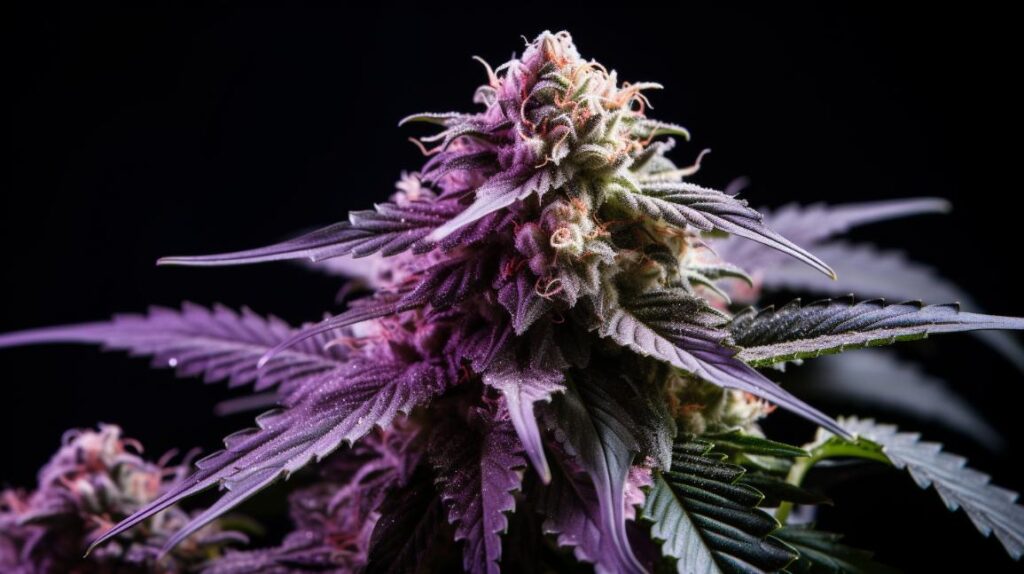
The Grape Gas strain, a distinguished hybrid cannabis cultivar, emerges from a complex lineage that includes OG Chem, Grand Daddy Purple, and The Truth. With a rich terpene profile, this strain exudes a distinct aroma of spicy grape candy mingled with sour citrus notes, underscored by a robust diesel undertone.
Users often report an invigorating yet euphoric experience, rendering Grape Gas a versatile option for both recreational and medicinal purposes. It boasts a substantial THC content, typically ranging between 15-23%, alongside a modest CBD level of approximately 1%. This balance makes it a viable choice for individuals seeking relief from chronic pain, depression, and insomnia, without overly sedative effects.
As such, Grape Gas has secured its position within the cannabis community for those in pursuit of a balanced and mentally uplifting experience.
Genetic Lineage
The Grape Gas strain consistently exhibits its complex genetic lineage, derived from the crossbreeding of Grape Pie and Jet Fuel Gelato, which itself incorporates genetics from OG Chem, Grand Daddy Purple, and The Truth. This intricate blend has given rise to a hybrid strain that balances the cerebral invigoration of sativa with the physical relaxation of indica.
The Grape Pie component, an indica-dominant cultivar, infuses the hybrid with a fruity and earthy profile, while the Jet Fuel Gelato parentage adds a potent, high-THC kick and a creamy finish to the equation.
Analyzing the genetic architecture of Grape Gas, one can appreciate the meticulous selection behind crossing Grape Pie with Jet Fuel Gelato. Grape Gasoline emerges as a distinct phenotype, boasting a flavor palette that expertly intertwines spicy grape candy with sour citrus notes and a robust gassy diesel undertone. This hybrid strain articulates the heritage of its forebears while offering a unique olfactory and gustatory experience.
The collaborative breeding efforts by Cannarado Genetics and Compound Genetics have indubitably crafted a strain that embodies a rich tapestry of aromas, effects, and genetic diversity within the cannabis culture.
THC/CBD Content
Grape Gas strain exhibits a considerable THC content typically ranging from 21% to 28%, with a minimal CBD level of around 1%. This hybrid strain (50% indica/50% sativa) is known for its potent psychoactive effects, which can be attributed to its above-average THC level compared to the broader cannabis market, where average THC levels usually span between 15% to 23%. The significant THC potency of 21% or more ensures that Grape Gas Marijuana provides a robust experience, suitable for recreational users seeking a powerful high as well as medical marijuana patients looking for effective symptom relief.
The THC level in Grape Gas can vary, typically falling between 18% to 22%, which still places it in the higher echelons of THC-rich cannabis varieties. This concentration facilitates a pronounced body buzz, which many users report as being deeply relaxing and calming. Despite the low CBD content, which stands at about 1%, the strain’s comprehensive cannabinoid profile contributes to its therapeutic potential. The meticulous balance of THC and CBD in Grape Gas is crafted to cater to those who prioritize a strong psychoactive impact without the significant presence of CBD, which is often sought after for its non-intoxicating medicinal benefits.
Terpene Profile
Several dominant terpenes, specifically myrcene, caryophyllene, and limonene, characterize the distinctive terpene profile of the Grape Gas strain, contributing to its unique flavor and therapeutic properties. The Grape Gasoline variant exudes a complex scent where the pungent grape notes blend harmoniously with the robust undertones of diesel, also referred to as Fuel in cannabis parlance. This olfactory combination is not only pleasing to the connoisseur’s nose but also suggests a multifaceted effect profile, potentially beneficial for both mental and physical relaxation.
An analytical look at the terpene composition reveals that myrcene, the most abundant terpene in the Grape Gas strain, is renowned for its sedative qualities and its enhancement of the overall entourage effect. Caryophyllene, on the other hand, is noted for its potential in anxiety and stress relief, while limonene adds an energizing citrus twist to the mix, which might contribute to uplifting moods and providing an invigorating experience.
| Terpene | Contribution to Grape Gasoline |
|---|---|
| Myrcene | Calming; Enhances grape notes |
| Caryophyllene | Stress relief; Adds spiciness |
| Limonene | Energizing; Citrusy undertones |
| Overall | Synergistic; Complex Pie aroma |
This terpene profile is not only a testament to the strain’s aromatic allure but also to its potential therapeutic versatility, making the Grape Gas strain a noteworthy contender in the cannabis market.
Effects
Harmony between the Grape Gas strain’s terpene profile and its effects is evident as users report a balanced blend of tranquil relaxation and a gentle surge of euphoria. The effects of Grape Gasoline, as experienced by consumers, demonstrate its dual nature, offering a soothing reprieve from stress while simultaneously invigorating the mind. Users often describe the onset as a wave of relief that washes away anxiety and tension, followed by an uplifting cerebral buzz that inspires positivity and contentment.
-
Calming Influence: The sedative properties of Grape Gasoline are more calming than overpowering, which makes it suitable for evening use or moments when decompression is desired without complete sedation.
-
Mood Elevation: Consumers who have smoked this strain say it makes them feel uplifted, often leading to a happy and euphoric state that can be beneficial for those dealing with depression or mood swings.
-
Physical Relief: In addition to its mental benefits, Grape Gas also offers physical relief from chronic pain, nausea, and appetite loss, providing a comprehensive therapeutic experience.
The strain’s nuanced effects underscore its versatility, catering to both recreational enjoyment and potential medicinal use. Its analytical profile reveals a strain capable of delivering multifaceted relief with minimal adverse reactions.
Medical Uses
The therapeutic potential of Grape Gas extends to a variety of medical conditions, including chronic pain and mood disorders. As a strain with a significant THC content and a complementary level of CBD, Grape Gas has been identified as a beneficial option for treating those suffering from persistent ailments and symptoms. Its profile suggests that it can effectively address both physical discomfort and psychological stressors.
What makes the grape gas strain particularly intriguing for medical uses is its dual-action effect. Initially, it may offer an influx of mental energy, which can be vital for patients dealing with chronic fatigue or depression, providing a necessary lift in spirits and cognitive function. Subsequently, the strain’s soothing qualities contribute to prolonged relaxation, essential for those with insomnia or chronic stress.
Below is a table summarizing the medical uses of Grape Gas:
| Condition | Symptom Relief | Additional Benefits |
|---|---|---|
| Chronic Pain | Pain Alleviation | Muscle Relaxation |
| Appetite Loss | Appetite Stimulation | Nausea Reduction |
| Depression | Mood Elevation | Creativity Boost |
| Chronic Fatigue | Energy Increase | Focus Improvement |
As an analytical overview, Grape Gas presents a versatile profile for supporting patients with diverse therapeutic needs. Its use should, however, be approached with informed guidance to tailor its benefits effectively to individual requirements.
Flavor and Aroma
While the Grape Gas strain is known for its potent effects, its distinct flavor and aroma profile, characterized by pungent grape and diesel notes, plays a significant role in its popularity among connoisseurs. When experiencing Grape Gas, one can expect pungent grape notes to be at the forefront, delivering a sensory bouquet that is both intense and gratifying. This is complemented by a diesel overtone, which adds a robust depth to the overall profile, reminiscent of its lineage that combines Grape Pie with Jet Fuel strains.
The intricate flavor composition is underpinned by:
- Spicy grape candy nuances, which provide a sweet complexity to the palate.
- Sour citrus elements that introduce a sharp, invigorating twist to the experience.
- A heavy gassy diesel undertone that anchors the flavor with its earthy boldness.
As an evenly balanced hybrid strain, Grape Gas offers a multifaceted aroma that is just as elaborate as its flavor. The bouquet is a blend of sour citrus and spicy grape notes with a hint of pungent sour diesel. This fragrance is not only a prelude to the taste but also enhances the overall consumption experience, making Grape Gas a strain with a remarkably memorable profile.
Appearance
Captivating connoisseurs with its pungent grape and diesel bouquet, the Grape Gas strain boasts an equally impressive appearance. It is characterized by its dense, grape-shaped buds with striking purple undertones and a gleaming coat of trichomes. This hybrid strain, which balances 50% indica and 50% sativa genetics, presents an intriguing visual tapestry that underscores its premium genetic heritage.
The Grape Gas strain’s green nugs are oversized and bright neon in color, providing a vivid contrast to the dark purple undertones that hint at the strain’s complex lineage. The orange hairs are thin but pronounced, weaving through the nugs like delicate threads of saffron. These are complemented by a coating of frosty, chunky trichomes, which possess a purple-white tint that gives the buds a glistening, sugary appearance. This crystalline layer not only contributes to the strain’s aesthetic appeal but also signals a high potency and rich cannabinoid profile.
The dense structure of the Grape Gas nugs further enhances their allure, making them particularly attractive to those with a discerning eye for quality cannabis. The vibrant green color interlaced with purple hues and the thick layer of shimmering trichomes together create a visual experience that is as memorable as the Grape Gas strain’s aromatic profile.
Grow Information
One can cultivate the Grape Gas strain with relative ease due to its strong natural resilience to pests and common plant diseases. This robust hybrid—a balanced blend of 50% indica and 50% sativa—embodies a harmonious combination of its parent strains, Grape Pie and Jet Fuel Gelato. Grape Gas not only inherits the aromatic legacy of Grape Pie’s fruity notes but also the high-octane vigor of Jet Fuel Gelato, often referred to by aficionados as ‘Gasoline.’
Growers appreciate this strain for both its manageable growing profile and its bountiful yields. The Grape Gas strain thrives in a variety of settings, adaptable to both indoor and outdoor cultivation. Its dense and fragrant buds mature into a pungent treasure trove of effects, mirroring the tranquil yet creative high that users seek.
Analytical cultivation details for Grape Gas include:
-
Flowering Time: A period of 60-70 days when cultivated indoors, with outdoor harvests typically ready by mid-October.
-
Yield: Growers can expect a generous outdoor yield of 16-64 ounces per plant and an indoor yield of 8-24 ounces per square meter.
-
Terpene Profile: Dominantly myrcene, caryophyllene, and limonene, contributing to its unique aroma and therapeutic properties.
This Marijuana strain is not only a delight for the senses but also a testament to the versatility and resilience that hybrid strains can offer to cultivators and consumers alike.
Adverse Effects
Although the Grape Gas strain offers a plethora of benefits for both growers and users, it is essential to consider the potential adverse effects, such as dry eyes, dry mouth, mild paranoia, and headaches, which some individuals may experience. As with many cannabis varieties, those who have smoked this strain say that it can lead to the commonly reported condition known as cottonmouth, a sensation of dryness within the oral cavity that is often accompanied by a similar dryness in the eyes.
It is not uncommon for users to report that after consuming the weed strain, particularly in the early evening hours, they feel a certain level of discomfort due to these dehydrating side effects. Despite these nuisances, the strain is still highly sought after, but it is vital to stay hydrated to mitigate these symptoms.
Moreover, a small fraction of users who have experimented with Grape Gas strain say it makes them feel uneasy, describing sensations of mild paranoia and occasional headaches. These adverse effects, while typically rare and mild in severity, should be taken into account, particularly by novice users or those with a predisposition to anxiety or headaches when selecting this strain for its appealing benefits.
Comparisons with Similar Strains
Several cannabis strains share similarities with Grape Gasoline, yet its distinctive terpene profile and balanced effects set it apart from counterparts like Desert Lime, Pancakes, and Nigerian Silver. As a hybrid strain with a 50% indica and 50% sativa composition, Grape Gasoline delivers a nuanced symphony of effects that oscillate more towards calming than energizing, which is not always the case with other hybrids.
-
Flavor Profile: Grape Gasoline’s genetics, a cross between Grape Pie and Jet Fuel Gelato, imbue it with a rich tapestry of flavors, combining the sweetness of grapes with the robust undertone of gasoline. This contrasts with strains like Desert Lime, which may offer a citrus-forward profile without the deep, diesel notes.
-
Effects: While some strains might lean heavily towards sedation or stimulation, Grape Gasoline’s balanced effects provide both an uplifting euphoria and a subtle relaxation, making it particularly versatile for users seeking equilibrium.
-
Medical Benefits: With a THC potency standing strong at 21%, Grape Gasoline shines in its capacity to alleviate a spectrum of conditions, from anxiety and stress to chronic pain and fatigue, distinguishing itself from similar strains that might not address such a broad range of symptoms.
This intricate blend of characteristics ensures that Grape Gasoline maintains a unique position within the diverse cannabis landscape.
Research and Studies
Numerous studies on the Grape Gas strain have begun to unravel the complexities of its terpene profile and its potential synergistic effects on medical conditions such as chronic pain and anxiety. With its origins from Cannarado Genetics and Compound Genetics, this strain has captivated researchers with its unique blend of Grape and Gasoline aromatics, which contribute to its distinct flavor and potential therapeutic properties.
The calming effects of Grape Gas are of particular interest, as they may offer clues into the mechanisms of cannabis-induced relaxation and stress relief. Studies have analyzed the strain’s balance of THC and terpenes such as myrcene, caryophyllene, and limonene, which are believed to contribute to its holistic effects.
| Terpene | Potential Benefit |
|---|---|
| Myrcene | Relaxation, Sedation |
| Caryophyllene | Anti-inflammatory, Analgesic |
| Limonene | Mood Elevation, Stress Relief |
| THC | Euphoria, Pain Relief |
This table summarizes the key components and their associated benefits, providing a snapshot of the Grape Gas strain’s pharmacological potential. Researchers continue to explore the full spectrum of effects, aiming to optimize its application for medical users seeking relief from various ailments. The analytical approach to understanding Grape Gas’s attributes underscores its significance in advancing cannabis genetics and patient care.
History and Origin
Delving into the history and origin of the Grape Gas strain, we find that its lineage is a testament to the innovative breeding practices of Cannarado Genetics and Compound Genetics. The strain’s genealogy is rooted in a distinctive crossing of Grape Pie and Jet Fuel Gelato, both of which contribute to its unique profile. By fusing these two cultivars, breeders have managed to encapsulate a flavor that resonates with spicy grape candy and sour citrus, while infusing the heavy gassy diesel aroma characteristic of its OG Chem, Grand Daddy Purple, and The Truth predecessors.
The historical development of the Grape Gas strain reflects a strategic selection of traits aimed at optimizing both the user experience and cultivation efficiency:
- Innovative Breeding: By combining Grape Pie’s fruity essence with the potency of Jet Fuel Gelato, an even balance of indica and sativa effects was achieved.
- Resin Production: The strain’s propensity for high crystal trichome counts makes it particularly suitable for resin pressing.
- Cultivation Adaptability: Grape Gas exhibits strong natural resilience, thriving both indoors and outdoors, with a flowering time that accommodates growers’ schedules.
The history and origin of the Grape Gas strain are not just about its early development but also its availability. Enthusiasts can often find Grape Gas at nearby dispensaries, sometimes even at a discount, making it a popular choice among consumers.
Frequently Asked Questions
Is Grape Gas Indica or Sativa?
The classification of a cannabis strain, whether indica or sativa, can be discerned through terpene analysis, cultivation techniques, and its specific grape aroma profiles, which contribute to its medical benefits and recreational effects.
Is Grape Indica or Sativa?
Grape as a botanical descriptor in cannabis typically refers to terpene profiles that exude grape aromas, often found in hybrid strains. These hybrids blend sativa’s cerebral effects with indica’s soothing properties, offering diverse medical benefits.
Is Gas a Sativa or Indica Strain?
The categorization of ‘gas’ strains typically varies, as genetics may lean towards sativa or indica dominance. Key considerations include terpene profiles, THC content, cultivation methods, and potential medicinal applications when determining a strain’s classification.
What Strain Is Grape Gas Gushers?
Grape Gas Gushers is a result of meticulous grape genetics exploration, combining a distinctive terpene profile with advanced cultivation techniques. This crossbreeding potential offers significant medical benefits, meriting in-depth discussion and analysis.

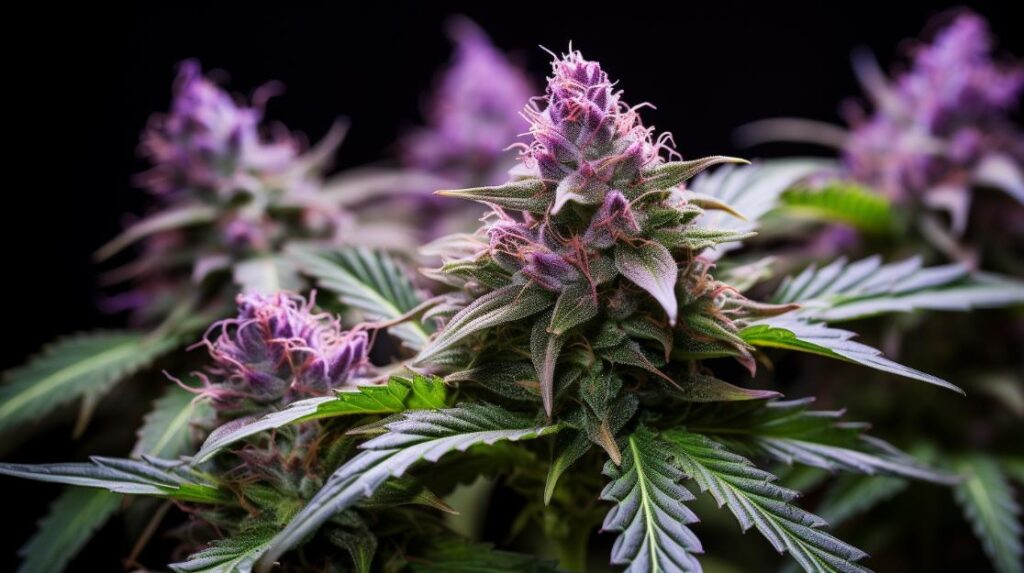
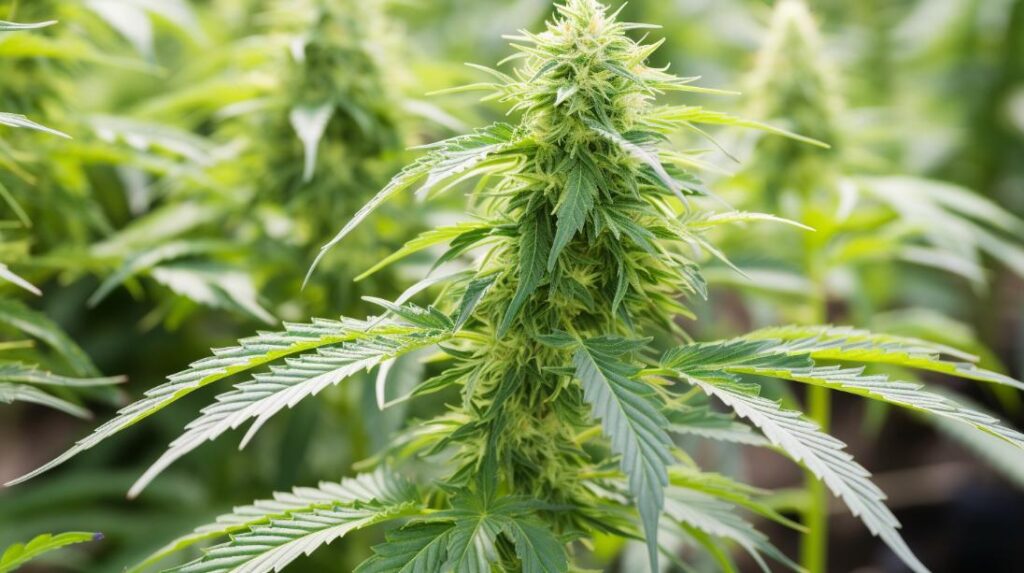
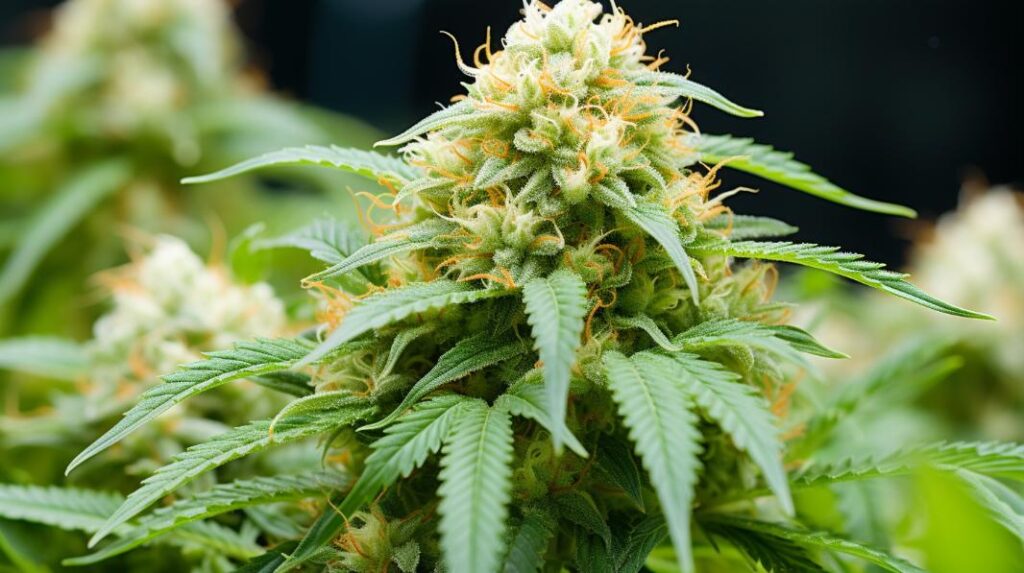
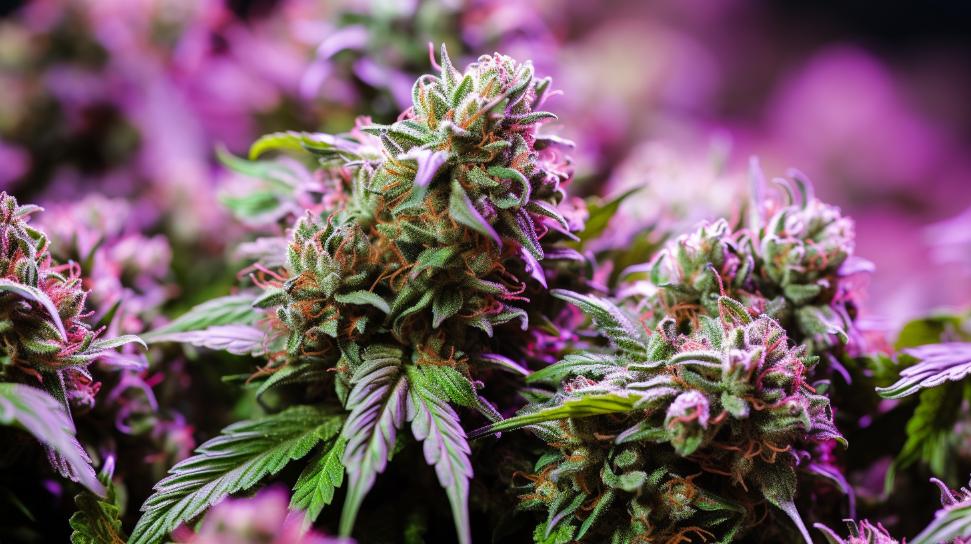
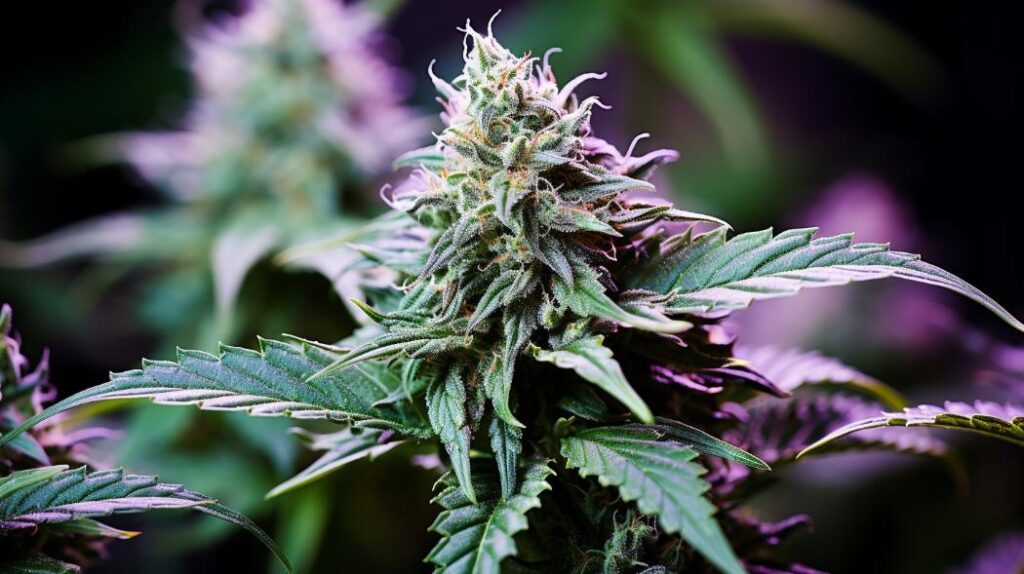

Responses